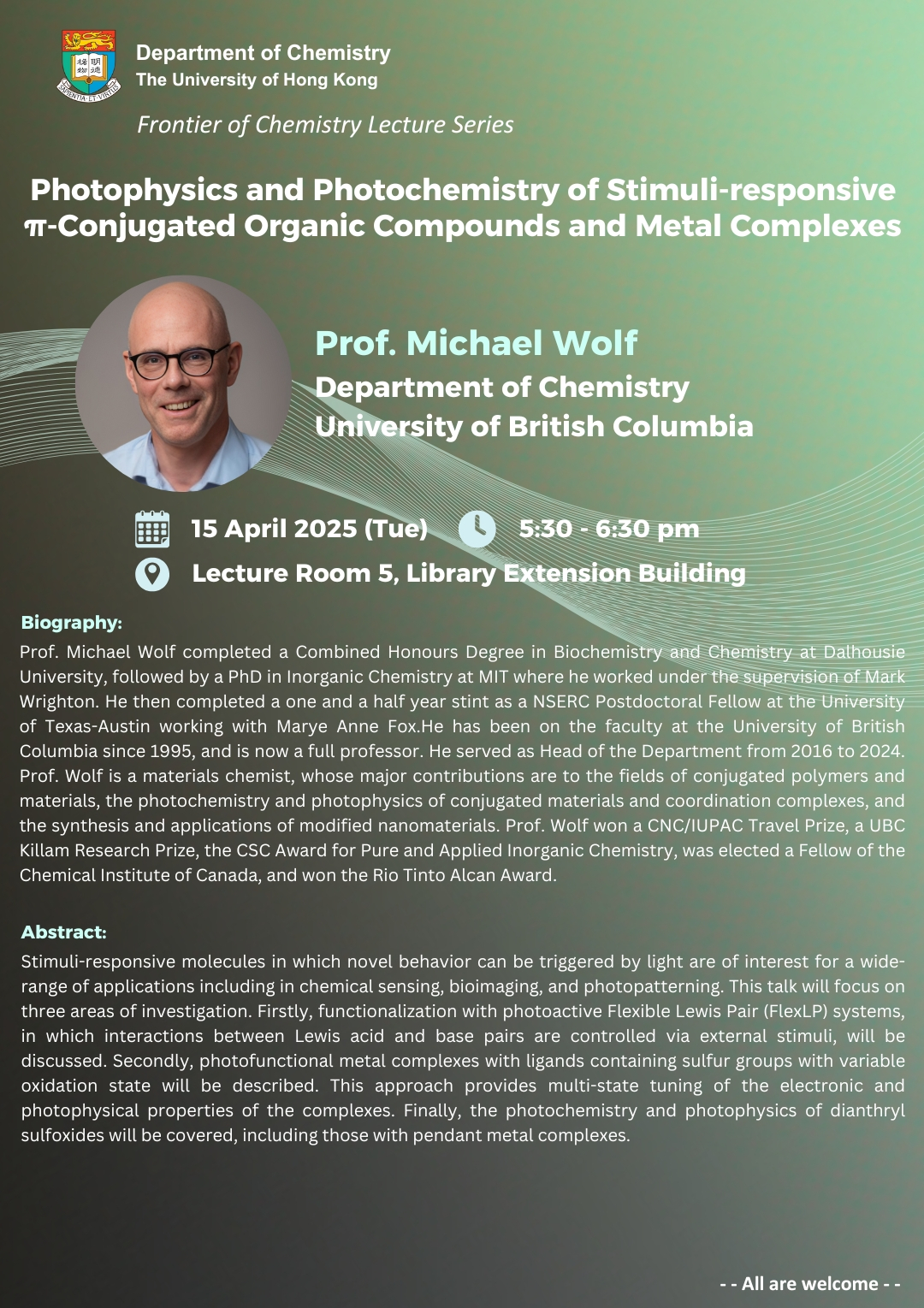| Date | 15 Apr 2025 |
| Time | 5:30 pm - 6:30 pm (HKT) |
| Venue | Lecture Room 5, Library Extension Building |
| Speaker | Prof. Michael Wolf |
| Institution | Department of Chemistry, The University of British Columbia |

Title:
Photophysics and Photochemistry of Stimuli-responsive π-Conjugated Organic Compounds and Metal Complexes
Schedule:
Date: 15th April, 2025 (Tuesday)
Time: 5:30 - 6:30 pm (HKT)
Venue: Lecture Room 5, Library Extension Building
Speaker:
Prof. Michael Wolf
Department of Chemistry
University of British Columbia
Biography:
Prof. Michael Wolf completed a Combined Honours Degree in Biochemistry and Chemistry at Dalhousie University, followed by a PhD in Inorganic Chemistry at MIT where he worked under the supervision of Mark Wrighton. He then completed a one and a half year stint as a NSERC Postdoctoral Fellow at the University of Texas-Austin working with Marye Anne Fox.He has been on the faculty at the University of British Columbia since 1995, and is now a full professor. He served as Head of the Department from 2016 to 2024. Prof. Wolf is a materials chemist, whose major contributions are to the fields of conjugated polymers and materials, the photochemistry and photophysics of conjugated materials and coordination complexes, and the synthesis and applications of modified nanomaterials. Prof. Wolf won a CNC/IUPAC Travel Prize, a UBC Killam Research Prize, the CSC Award for Pure and Applied Inorganic Chemistry, was elected a Fellow of the Chemical Institute of Canada, and won the Rio Tinto Alcan Award.
Abstract:
Stimuli-responsive molecules in which novel behavior can be triggered by light are of interest for a wide-range of applications including in chemical sensing, bioimaging, and photopatterning. This talk will focus on three areas of investigation. Firstly, functionalization with photoactive Flexible Lewis Pair (FlexLP) systems, in which interactions between Lewis acid and base pairs are controlled via external stimuli, will be discussed. Secondly, photofunctional metal complexes with ligands containing sulfur groups with variable oxidation state will be described. This approach provides multi-state tuning of the electronic and photophysical properties of the complexes. Finally, the photochemistry and photophysics of dianthryl sulfoxides will be covered, including those with pendant metal complexes.
- - ALL ARE WELCOME - -
